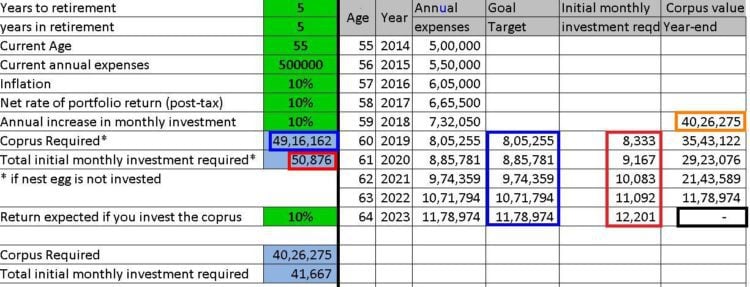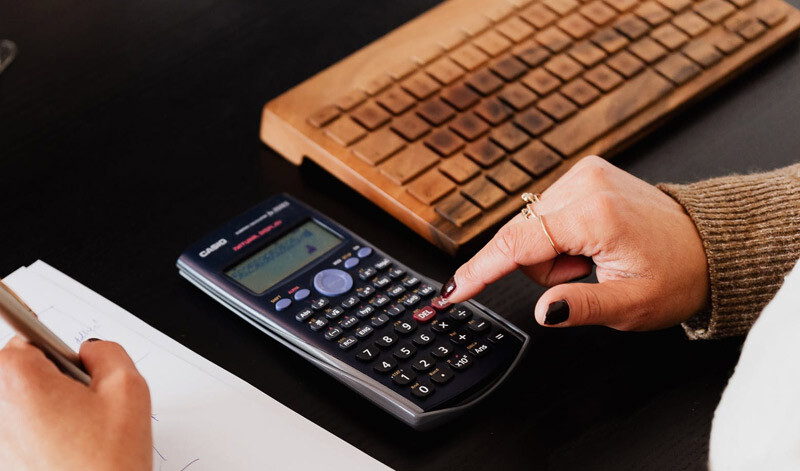

The is because SG contributions are included in this cap.Īfter maxing out the above concessional cap, you can look to make after-tax contributions, which count towards your non-concessional cap of $110,000 per annum.
Retirement drawdown calculator australia free#
Salary sacrifice and personal tax-deductible contributions offer plenty of tax benefits, but there is still a lot of merit to contributing funds after tax, as once the money is in super, it’s in a tax-friendly environment and you can draw on it tax free after turning 60.Īs you have indicated, as you have more than $500,000 in super, you cannot use the ‘carry forward’ provisions, so you have a concessional (pre-tax) contributions cap of $27,5-22.īut the amount of pre-tax contributions available to you would be less than this cap if you are receiving SG contributions from your employer.

That said, please ensure you leave enough funds outside of super to cover any upcoming large or unexpected expenses. However, as you get closer to retirement age, as you are, this becomes less of an issue. The main downside to super is that funds have to be locked away until retirement. Superannuation is a very tax-friendly structure to save funds. Is it still a good plan to put it into super? I would like to put the majority of the $450,000 into super, but I note I can’t use the carry forward provision. I have an investment property which I plan to sell after I retire to pay off my home loan. I’m about to sell an apartment and will have $450,000 in cash afterwards. I have $650,000 in an industry super fund. Question 2: I am 59, about to turn 60 in December. Using the default assumptions built into the Moneysmart Retirement Calculator – and assuming you are single, will retire at age 65, want the funds to last until age 90, and require an annual income of $80,000 (indexed up each year for inflation) – then you need approximately $1,550,000 by retirement to live on an income of $80,000 per year. If you want $80,000 net (after tax) and you were investing outside of super, you would need to generate a gross income of about $106,700 to allow for income tax and Medicare Levy (this assumes there are no franking credits or other tax offsets).īy comparison, if you withdraw funds from super after age 60, then you can generally do this tax-free.Īs you can see from the above, many variables would influence the answer to your question. Interest rates are at historic lows so if you only wanted to invest in low-risk options like cash and term deposits, you would only receive a very modest return, meaning you would need a much higher starting balance to generate the income you require.īy comparison, shares and property have performed strongly but their income returns, and their value, can fluctuate heavily over short periods. The results of any calculation will be highly variable and depend on the rate of return from our investments. The RBA has a handy inflation calculator that you can play around with to work out the effect inflation has over time.

So if your money is not keeping up with inflation, your standard of living is going backwards. This means that if you spent $80,000 in the year 2000 and wanted to buy those same items in 2020, you would need $129,948 to do this. The price of goods goes up each year, therefore your income requirements will also need to go up to match this.įor instance, between the years 20, inflation has risen on average by 2.5 per cent per year, or by 62.4 per cent in total. If your question relates to retirement income, as we have assumed, then I would always look to factor in age pension benefits. Many individuals may only receive a part age pension when they retire, but as they draw down on their funds, the age pension increases. It provides a guaranteed back-up, almost like an insurance policy. This will mean you need this income for 25 years.Ī key part of most people’s retirement strategy is the age pension. You have a 50 per cent chance of exceeding this, so to be safe, let’s give you a buffer of five years.


 0 kommentar(er)
0 kommentar(er)
